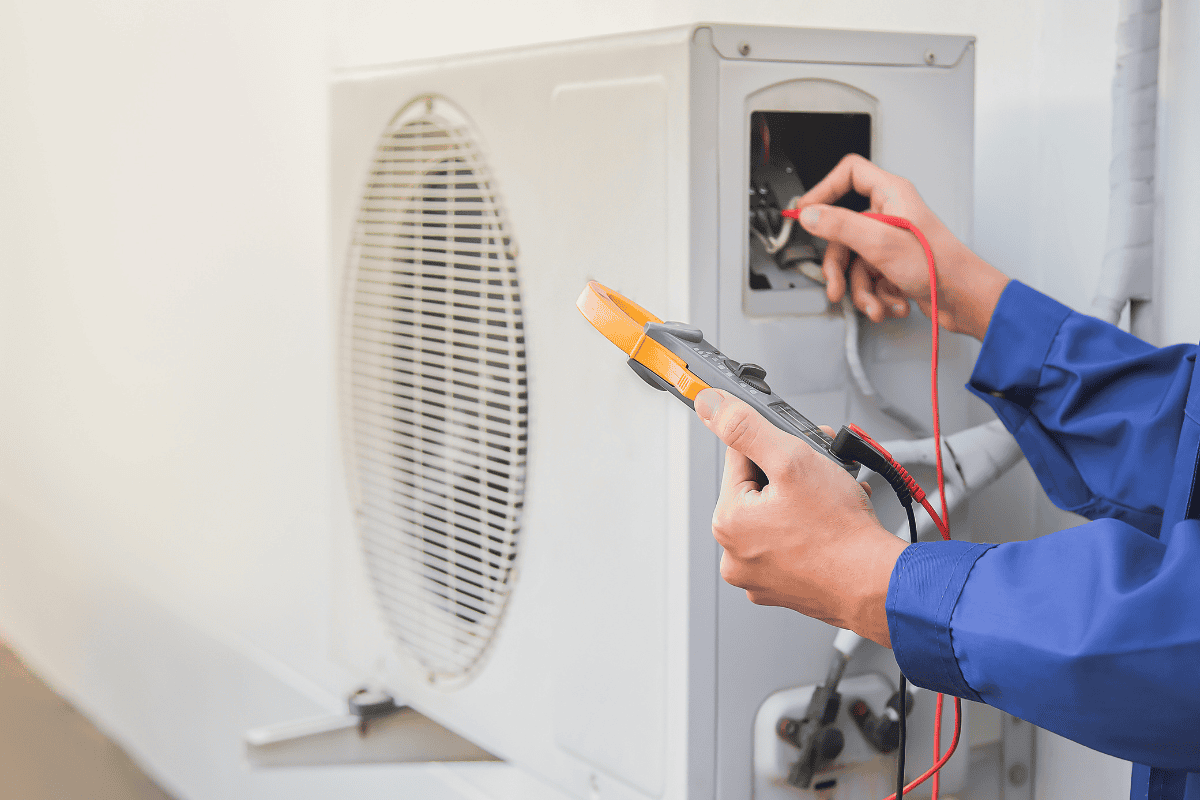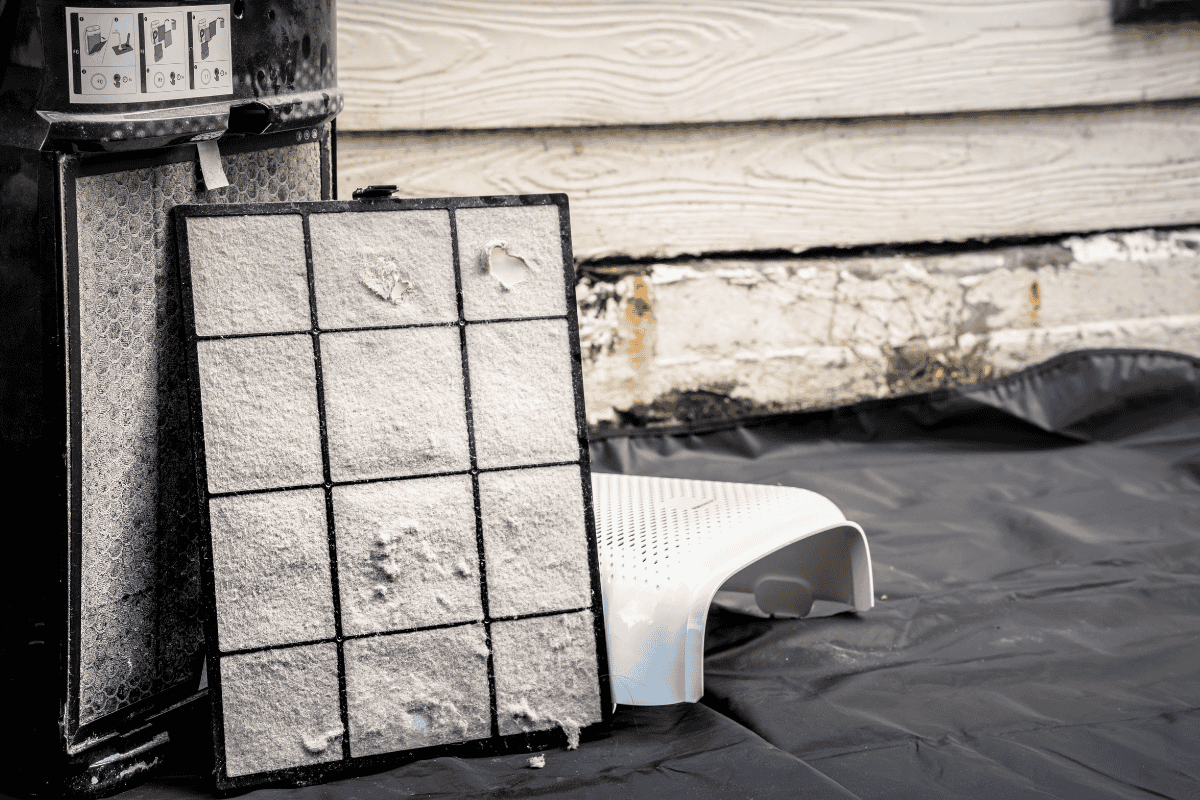AC Drain Line: Where It Is and Why It Matters?

Did you know that your air conditioner has a hidden hero working tirelessly to protect your home from water damage? Meet the air conditioner drain line, the unsung champion of your cooling system.
As your air conditioner cools the air, moisture condenses on the evaporator coil, creating water droplets that need to be managed. That’s where the drain line comes in – it’s responsible for channeling this condensate away from your AC unit, preventing water buildup and potential damage.
But here’s the shocking truth: an average residential air conditioning system can produce up to 20 gallons of condensate per day! That’s right, your AC is not only cooling your home but also acting as a mini water generator. Without a properly functioning drain line, all that water would have nowhere to go, leading to a host of problems like water damage, mold growth, and even system breakdowns.
So, let’s discuss why this often-overlooked component is crucial to the health and longevity of your air conditioner. Get ready to learn where to find your drain line, how to keep it clear, and what to do if you suspect an AC drain line is clogged. Your home and your AC will thank you for giving this hidden hero the attention it deserves!
Contents
Locating the Air Conditioner Drain Line
The AC drain line plays a vital role in removing condensation from your air conditioner, and it’s essential to know where to find it. Here’s how you can locate the drain line in both the indoor and outdoor units of your AC system:
Indoor Unit
The indoor unit of your air conditioner houses the evaporator coil, which is responsible for absorbing heat and moisture from the air inside your home. The drain line is typically located near the evaporator coil and is connected to the drain pan. Look for a PVC pipe or a flexible condensate line that runs from the indoor unit to the outside of your home. This pipe is often white and may have a cap on the end.
Outdoor Unit
The outdoor unit, also known as the condenser unit, is where the drain line ultimately ends. To find the drain line outside your home, look for a vertical PVC pipe near the outdoor condenser unit. The drain line is usually located close to the foundation of your house and may have a small access point or clean-out cap.
Tips for Maintaining the AC Drain Line
1. Regular Inspection
Inspecting your AC drain line regularly helps in preventing clogs and maintaining proper drainage. Check the drain pan and the end of the drain line for any signs of water accumulation, which could indicate a blockage. Also, inspect the drain pipe for visible damage, such as cracks or leaks, that could hinder its performance.
2. Cleaning the Drain Line
To keep your AC drain line clear and free-flowing, periodically flush the line with a mixture of water and vinegar. This simple solution can help dissolve algae, mold, and other debris that may cause clogs. Alternatively, you can use a wet/dry vacuum to suction out any blockages from the drain line. Remember, the diameter inside your drain line must be at least ¾ of an inch, according to the International Mechanical Code (IMC).
3. Installing a Drain Line Trap
Consider installing a drain line trap to catch debris before it enters the drain pipe and causes a clog. A trap acts as a barrier, preventing debris from accumulating in the line and obstructing water flow. Make sure to install the trap correctly and clean it regularly to maintain its effectiveness.
4. Using Algaecide Tablets
Algaecide tablets can be placed in the drain pan to inhibit the growth of algae and mold, which are common culprits of drain line clogs. Follow the manufacturer’s instructions for proper dosage and usage to effectively prevent microbial growth and keep your drain line clear.
5. Monitoring Humidity Levels
High indoor humidity levels can lead to increased condensation in your air conditioning system, putting extra strain on the drain line. Keep an eye on humidity levels and use a dehumidifier if necessary to maintain optimal indoor moisture levels. According to the Environmental Protection Agency (EPA), indoor humidity should be kept below 60% to prevent mold growth and maintain good indoor air quality.
6. Professional Maintenance
Regular maintenance by an HVAC professional is essential for keeping your AC drain line in top condition. During a maintenance visit, a technician will thoroughly inspect the drain line, clean it if necessary, and identify any potential issues that could lead to clogs or water damage in the condensate drain line. Consider scheduling AC tune-ups at least once a year to make sure your drain line and the rest of your air conditioning system are functioning properly.
Importance of Maintaining the AC Drain Line
1. Preventing Clogs and Blockages
Regular maintenance of your air conditioner’s drain line is essential to prevent clogs and blockages that can lead to water backups and potential damage to your AC system and home. A clogged drain line can cause water to overflow from the condensate pan, resulting in water damage to floors, walls, and ceilings.
Keeping your AC drain line clear makes sure that condensation from the air conditioner’s evaporator coil is properly drained away, protecting your home from costly water-related issues.
2. Ensuring Proper Drainage
Maintaining a clean and unobstructed AC drain line is important for proper drainage and efficient operation of your air conditioning system. When the drain line is functioning correctly, it allows condensation to be effectively removed from the AC unit, preventing moisture buildup that can hinder cooling performance.
Proper drainage helps your air conditioner maintain consistent temperature and humidity levels inside your home, keeping you comfortable and your indoor air quality healthy.
3. Minimizing Mold and Mildew Growth
A well-maintained AC drain line plays a vital role in minimizing the growth of mold and mildew within your HVAC system. When the drain line becomes clogged, it creates a damp, stagnant environment that is conducive to microbial growth.
Mold and mildew can not only cause unpleasant odors and compromise indoor air quality but also pose serious health risks. According to the Centers for Disease Control and Prevention (CDC), exposure to mold can trigger asthma symptoms, allergic reactions, and respiratory irritation, even in people without pre-existing allergies.
4. Preventing Structural Damage
By keeping your AC drain line clear and free-flowing, you can prevent water from accumulating around the indoor air handler and seeping into the surrounding walls, ceilings, or other structural components of your home.
Over time, continuous exposure to moisture can weaken building materials, leading to rot, corrosion, and even structural instability. Regularly inspecting and maintaining your drain line can help you avoid costly repairs and preserve the integrity of your home’s structure.
5. Extending Equipment Lifespan
Proper maintenance of your AC drain line contributes to the overall longevity and performance of your HVAC system. When the drain line is functioning efficiently, it prevents water from pooling around sensitive components like the evaporator coil or electrical connections, reducing the risk of corrosion, electrical damage, and premature failure.
By taking care of your drain line, you can extend the life of your air conditioning unit and save money on expensive repairs or replacements in the long run.
Contact HVAC Angel For All Your HVAC Needs
At HVAC Angel, we understand the importance of maintaining a clean and functional AC drain line to protect your home and maintain the optimal performance of your air conditioning system. Our team of experienced HVAC technicians is dedicated to providing top-notch drain line maintenance services to prevent clogs, water damage, and other related issues.
When you choose HVAC Angel for your AC drain line needs, you can trust that you’re in the hands of experts who prioritize your comfort, safety, and satisfaction. We use state-of-the-art tools and techniques to thoroughly inspect and clean your drain line, identifying and resolving any problems before they escalate.
Our comprehensive AC maintenance services include regular drain line check-ups, cleaning, and preventive measures to keep your system running smoothly and efficiently. We also offer prompt and reliable repair services in case of a clogged or damaged drain line, so that your home is protected from water damage and your AC system is back up and running in no time.
Don’t let a clogged AC drain line put your home and comfort at risk. Contact HVAC Angel today to schedule your drain line maintenance or repair service and experience the peace of mind that comes with knowing your AC system is in the best hands.
Frequently Asked Questions
1. How many drain lines does an AC have?
Typically, an air conditioning system has one main drain line that carries condensation from the indoor unit to the outside of your home. However, some systems may have a secondary or backup drain line to prevent water overflow in case the primary line becomes clogged.
2. Does every AC have a drain?
Yes, all air conditioning systems produce condensation as a byproduct of the cooling process and require a drain line to remove the water safely and efficiently. Without a drain, the condensation would accumulate inside the AC unit and cause water damage.
3. How do I clear my AC drain line?
You can clean an AC drain line by flushing it with a mixture of water and vinegar or using a wet/dry vacuum to suction out any debris. For tough clogs, you may need to use a plumber’s snake or contact an HVAC professional for assistance.
4. Why is my AC not draining water?
If your AC is not draining water, it could be due to a clogged drain line, a damaged condensate pan, or a malfunctioning condensate pump. It’s essential to address the issue promptly to prevent water damage and restore proper drainage.
5. Should AC always drip water?
While it’s normal for an AC unit to produce some condensation during operation, it should not constantly drip water. If you notice excessive water dripping from your AC, it could indicate a clogged drain line, a refrigerant leak, or other issues that require professional attention.





